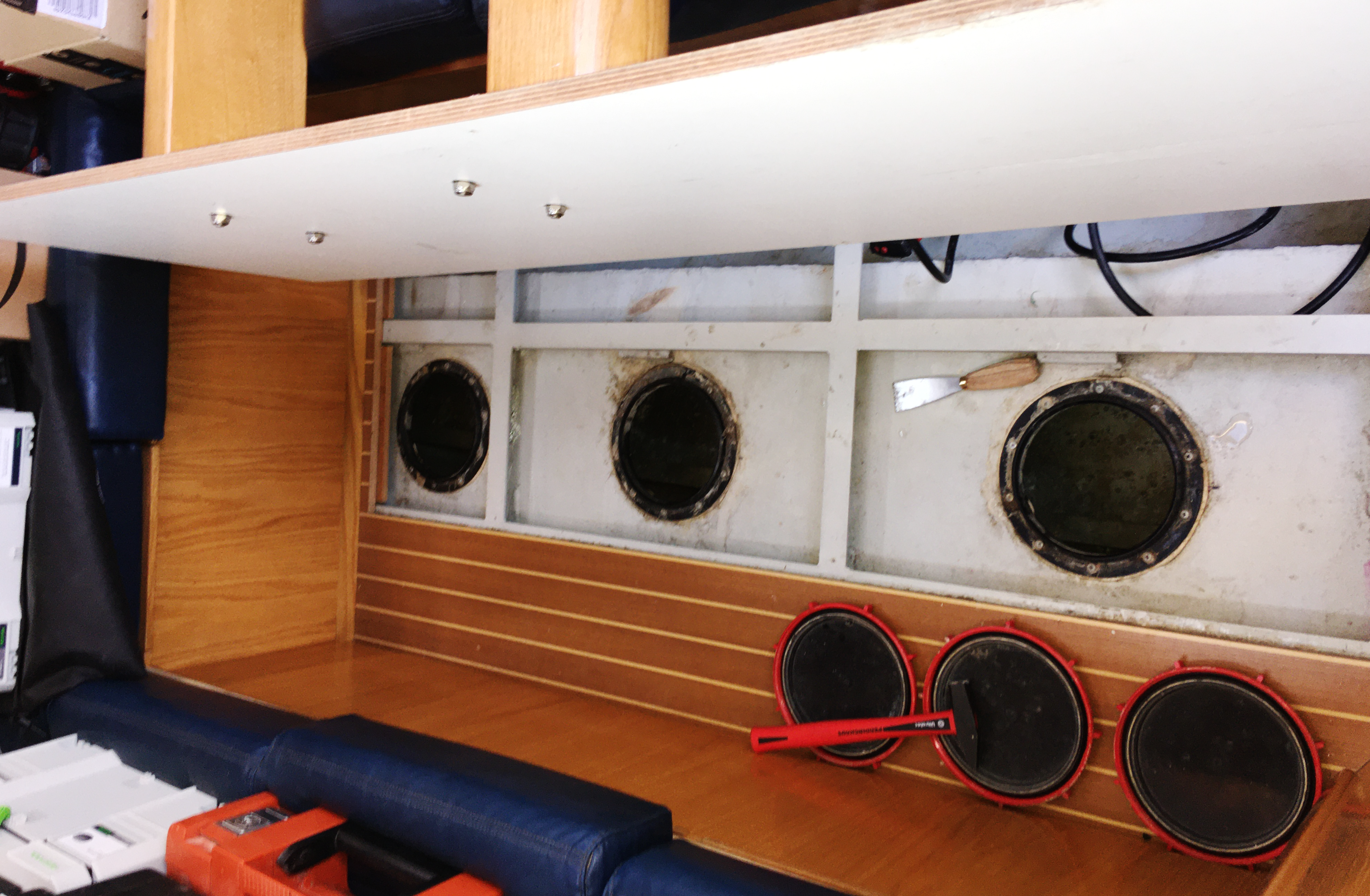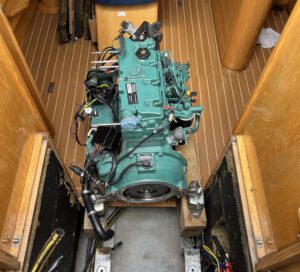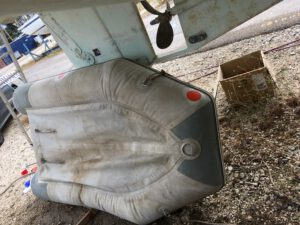Updated information after 2 years can be found below.
Do you know those Whale polycarbonate watertight locker door/access hatch on the water tank that you open after a few years and can no longer seal? I had the same problem and tried different solutions until I found the right one. If you’re reading this, save yourself some time to fix it.
Well I had this problem this summer and now I know the what is going on.
This summer I had to open those hatches to clean the water tanks and put in a magnesium anode to stop corrosion. It was a bit difficult to open them after 20 years. I had to pound the red flap periphery a bit to turn it.
After I finished the job I cleaned the nitrile rubber seal and screwed the red flap back on… and the fresh watter of the tank was leaking!
First idea: olive oil
After closing the hatches, I filled the tank with water until it was full, it took some time. Then I could see the water seeping out different sides of the hatch. Each of them was leaking.
I red in forums that it may happend if the rubber seal is too hard and doesen’t place itself in the right position. The recomadation on the forum was to put some greace or oil on the rubber bevor closing. so I put some olive oil on it.
and… the problem remained the same.
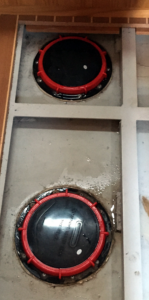
Second idea: change the nitrile rubber seal
I bought some new rubber seals with dimensions similar to the originals. D180mmx5.5mm at Hug-Technik Shop looked very similar to the original. After mounting them on 3 hatches, I carefully screwed the hatches shut and filled them with water.
and… the problem remained the same.
Another simplified idea was to put more force on the red flap screw connection. So I tried that in one of them. This action seemed to increase the problem when I applied some pressure to the top of the cover. The water seeped from all sides.
The problem is not with the rubber seal but with the surface it sits on.

Third idea: change the entire plastic hatch
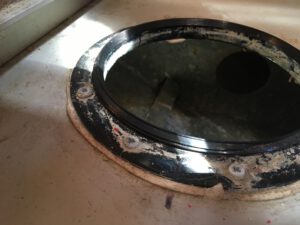
First I took a close look at the base of the hatch that is bolted to the opening of the water tank. Up close (very close) I can see microcracks everywhere.
so there was nothing left but to remove the complete plastic hatch and replace it with a new one.
I was also thinking of just putting on an aluminum or perspex cover with a seal, but I hadn’t prepared one and I wanted to be out of the port in 2 days.
To remove it, all I had to do was remove the screws and gently pull on it. It came off in several pieces because it wasn’t in one piece like it was supposed to be.
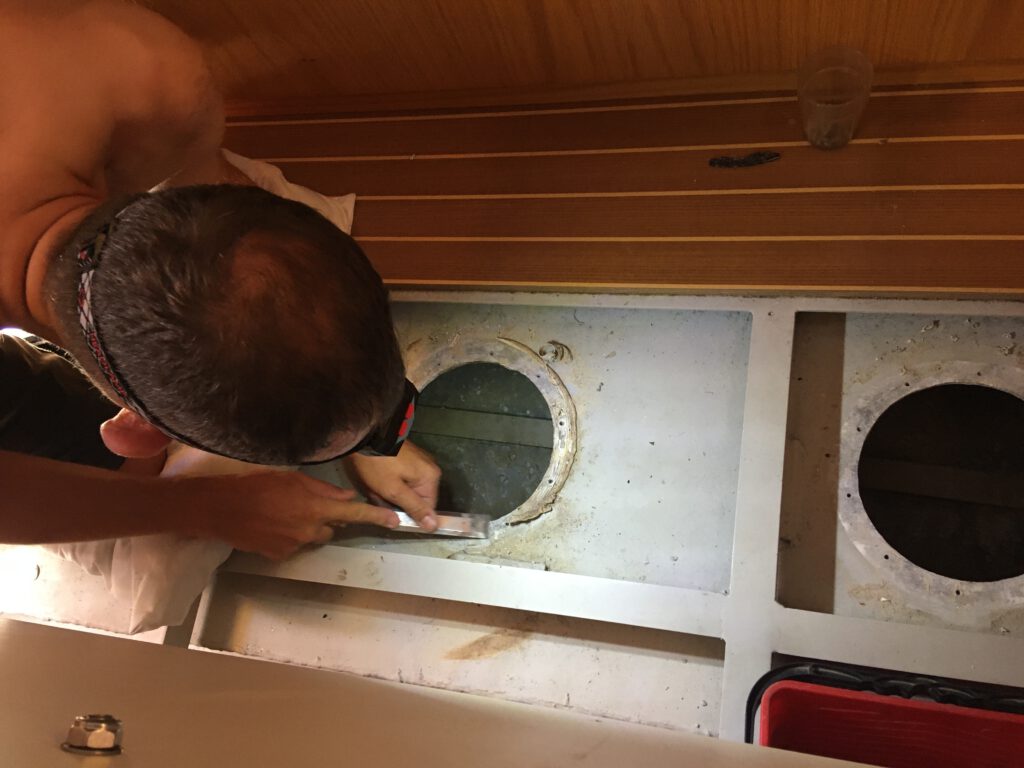
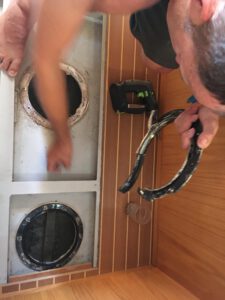
Using my favorite multi-tool (Two Cherries Chisel and I know that’s not its purpose, but it works incredibly well. I love this tool!) removed the seal and cleaned with acetone the surface before applying the new Sikaflex sealant and fitting the new hatch.
The old watertight WHALE hatches were 20 years old and never opened.
After replacing all 5 hatches, everything is watertight. When I fill up water, I see a small air bubble under the transparent cover and no water comes out. I can open and close the hatch effortlessly and everything stays tight. I hope it stays that way for a few more years.
2 Years Later...
Two years ago, we replaced all the locker doors and access hatches on our water tanks with new Whale polycarbonate watertight models. Unfortunately, from the very first time we opened them, we discovered that getting them to close tightly enough to prevent leaks was impossible. It seems like these hatches are more of a one-time-use product—once opened, they just don’t seal as well as expected. For something that’s supposed to handle the pressure and keep water out, this was a huge disappointment.
Because of this ongoing issue, we’re planning to change the system next year. Our solution? Self-made Plexiglass panels with a pressed sealing joint using an O-ring. We’re hoping this custom approach will finally give us the watertight seal we’ve been missing and offer a more reliable, long-lasting solution.
